Resident Crews of the International Space Station (ISS)
![]()
ISS: Expedition 68 |
 |
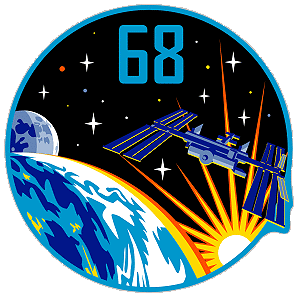 |
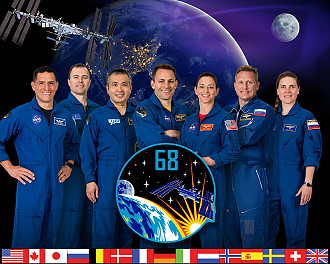 |
crew poster |
|
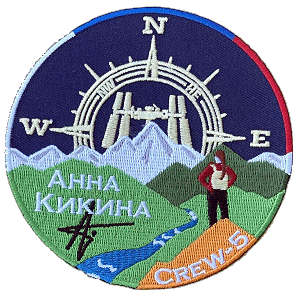 |
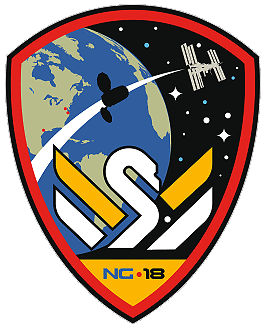 |
 |
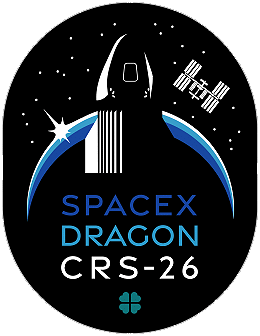 |
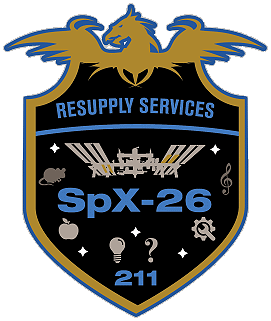 |
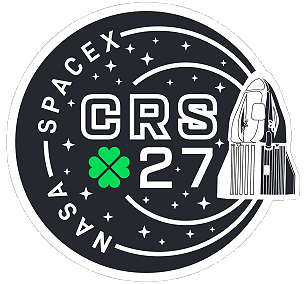 |
![]()
Crew, launch- and landing data
| No. | Nation | Surname | Given names | Position | Spacecraft (launch) |
Launch date |
Launch time |
Spacecraft (landing) |
Landing date |
Landing time |
Mission duration |
Orbits |
| 1 | Cristoforetti | Samantha | ISS-CDR | SpaceX Crew-4 | 27.04.2022 | 07:52:55 UTC | SpaceX Crew-4 | 14.10.2022 | 20:55:27 UTC | 170d 13h 02m 32s | 2720 | |
| 2 | Lindgren | Kjell Norwood | Flight Engineer-1 | SpaceX Crew-4 | 27.04.2022 | 07:52:55 UTC | SpaceX Crew-4 | 14.10.2022 | 20:55:27 UTC | 170d 13h 02m 32s | 2720 | |
| 3 | Hines | Robert Thomas "Farmer", Jr. | Flight Engineer-2 | SpaceX Crew-4 | 27.04.2022 | 07:52:55 UTC | SpaceX Crew-4 | 14.10.2022 | 20:55:27 UTC | 170d 13h 02m 32s | 2720 | |
| 4 | Watkins | Jessica Andrea | Flight Engineer-3 | SpaceX Crew-4 | 27.04.2022 | 07:52:55 UTC | SpaceX Crew-4 | 14.10.2022 | 20:55:27 UTC | 170d 13h 02m 32s | 2720 | |
| 5 | Prokopyev | Sergei Valerievich | ISS-CDR * | Soyuz MS-22 | 21.09.2022 | 13:54:49.531 UTC | Soyuz MS-23 | 27.09.2023 | 11:17:05.6 UTC | 370d 21h 22m 16s | 5936 | |
| 6 | Petelin | Dmitri Aleksandrovich | Flight Engineer-5 | Soyuz MS-22 | 21.09.2022 | 13:54:49.531 UTC | Soyuz MS-23 | 27.09.2023 | 11:17:05.6 UTC | 370d 21h 22m 16s | 5936 | |
| 7 | Rubio | Francisco Carlos "Frank" | Flight Engineer-6 | Soyuz MS-22 | 21.09.2022 | 13:54:49.531 UTC | Soyuz MS-23 | 27.09.2023 | 11:17:05.6 UTC | 370d 21h 22m 16s | 5936 | |
| 8 | Mann | Nicole Victoria Aunapu "Duke" | Flight Engineer-7 | SpaceX Crew-5 | 05.10.2022 | 16:00:57 UTC | SpaceX Crew-5 | 12.03.2023 | 02:02:09 UTC | 157d 10h 01m 12s | 2512 | |
| 9 | Cassada | Josh Aaron | Flight Engineer-8 | SpaceX Crew-5 | 05.10.2022 | 16:00:57 UTC | SpaceX Crew-5 | 12.03.2023 | 02:02:09 UTC | 157d 10h 01m 12s | 2512 | |
| 10 | Wakata | Koichi | Flight Engineer-9 | SpaceX Crew-5 | 05.10.2022 | 16:00:57 UTC | SpaceX Crew-5 | 12.03.2023 | 02:02:09 UTC | 157d 10h 01m 12s | 2512 | |
| 11 | Kikina | Anna Yuryevna | Flight Engineer-10 | SpaceX Crew-5 | 05.10.2022 | 16:00:57 UTC | SpaceX Crew-5 | 12.03.2023 | 02:02:09 UTC | 157d 10h 01m 12s | 2512 | |
| 12 | Bowen | Stephen Gerard | Flight Engineer-11 | SpaceX Crew-6 | 02.03.2023 | 05:34:14 UTC | SpaceX Crew-6 | 03.09.2023 | 04:17:23 UTC | 185d 22h 43m 09s | 2976 | |
| 13 | Hoburg | Warren Woodrow "Woody" | Flight Engineer-12 | SpaceX Crew-6 | 02.03.2023 | 05:34:14 UTC | SpaceX Crew-6 | 03.09.2023 | 04:17:23 UTC | 185d 22h 43m 09s | 2976 | |
| 14 | Al Neyadi | Sultan Saif Muftah Hamad | Flight Engineer-13 | SpaceX Crew-6 | 02.03.2023 | 05:34:14 UTC | SpaceX Crew-6 | 03.09.2023 | 04:17:23 UTC | 185d 22h 43m 09s | 2976 | |
| 15 | Fedyayev | Andrei Valerievich | Flight Engineer-14 | SpaceX Crew-6 | 02.03.2023 | 05:34:14 UTC | SpaceX Crew-6 | 03.09.2023 | 04:17:23 UTC | 185d 22h 43m 09s | 2976 |
* since October 12. 2022 Sergei Prokopyev replaced Samantha Cristoforetti as ISS-CDR
 |
Expedition Report
|
ISS Expedition 68 began with the undocking of Russian
spacecraft Soyuz
MS-21 on September 29, 2022 at 07:34:20
UTC. The landing crew consisted of Oleg Artemyev, Denis Matveyev and Sergei Korsakov. Three-and-a-half-hours later the crew landed safely in Kazakhstan. So, the new Expedition 68 consisted of ISS Commander Samantha Cristoforetti, Kjell Lindgren, Robert Hines, Jessica Watkins, Sergei Prokopyev, Dmitri Petelin and Francisco Rubio. SpaceX Crew-5 Endurance docked to the International Space Station on October 06, 2022 at 21:01 UTC. The spacecraft was launched on October 05, 2022 at 16:00:57 UTC from Cape Canaveral (KSC). With docking the crewmembers Nicole Mann, Josh Cassada, Koichi Wakata and Anna Kikina became Flight Engineers of ISS Expedition 68. SpaceX Crew-4 Freedom undocked on October 14, 2022 at 16:05 UTC and landed a few hours later off the coast of Florida (near Jacksonville). Progress MS-19 undocked from the International Space Station on October 23, 2022 at 22:45:34 UTC. The unmanned transporter re-entered the atmosphere a day later and burned up over the South Pacific. Progress MS-21 launched from the cosmodrome Baikonur on October 26, 2022 at 00:20:09.237 UTC. The unmanned freighter delivered to the ISS about 2.500 kg of cargoes, including refueling fuel, drinking water and compressed nitrogen, as well as 1,360 kg of various equipment, materials and food to support the work and life activities of the crew of the Expedition 68. The spacecraft docked about two days later on October 28, 2022 at 02:48:54 UTC to the space station. Northrop Grumman launched its 18th resupply mission to the International Space Station on November 07, 2022 at 10:32:42 UTC from NASA's Wallops Flight Facility on Wallops Island. Loaded with more than 8,200 pounds (3,720 kilograms) of research, crew supplies, and hardware, Northrop Grumman's Cygnus NG-18 cargo spacecraft launched on the company's Antares rocket. The Cygnus spacecrafts dubbed the SS Sally Ride. Highlights of space station research facilitated by this mission are: a facility and study that attempt to advance 3D biological printing of human tissue in space a study taking advantage of microgravity to better understand catastrophic mudflows that can occur after wildfires Uganda and Zimbabwe's first satellites developed as a part of the BIRDS program, an interdisciplinary project for non-space faring countries an investigation into how microgravity influences ovary function an experiment that studies if changes space-grown plants undergo to adapt to microgravity can be transmitted through seeds to the next generation. The freighter carried hardware to be installed outside the station in preparation for the installation of Roll-Out Solar Arrays. The Cygnus spacecraft, dubbed the SS Sally Ride in honor of the late American Space Shuttle astronaut, arrived at the space station on November 09, 2022. At 10:20 UTC, Nicole Mann captured Cygnus with the station's robotic arm, and Josh Cassada supported him. After Cygnus capture, mission control in Houston sent ground commands for the station's arm to rotate and install the cargo spacecraft on the Earth-facing port of the station's Unity module. Josh Cassada and Francisco Rubio left the International Space Station on November 15, 2022 (7h 11m) to assemble a mounting bracket on the starboard side of the station's truss assembly. On November 17, 2022 Sergei Prokopyev and Dmitri Petelin performed the first Russian spacewalk in this expedition (hm). They left the space station through the Poisk airlock. The cosmonauts prepared the cooler heat exchanger on the Rassvet module for the transfer to the Nauka module. More tasks were Installation of the blocker at Strela-2 and the Installation of the bulky cargo securing device on Nauka module. SpaceX's 26th Commercial Resupply Services mission launched on November 26, 2022 at 19:20:43 UTC on a Falcon 9 rocket from Launch Complex 39A at NASA's Kennedy Space Center in Florida. Dragon SpX-26 or CRS-26 carried more than 7,777 pounds (3,528 kg) research, logistics and hardware for the Expedition 68 crew including the next pair of ISS Roll Out Solar Arrays (IROSAs). It also carried a study to grow dwarf tomatoes to help create a continuous fresh-food production system in space, as well as an experiment that tests an on-demand method to create specific quantities of key nutrients. About 12 minutes after launch, Dragon separated from the Falcon 9 rocket's second stage and began a carefully choreographed series of thruster firings to reach the space station. Arrival to the station was on November 27, 2022. Dragon docked autonomously to the forward-facing port of the station's Harmony module, with NASA astronauts Josh Cassada and Nicole Mann monitoring operations from the station. The next US spacewalk followed on December 03, 2022 (7h 05m). Josh Cassada and Francisco Rubio installed an IROSA (ISS Rollout Solar Array) on the starboard 4 truss at the International Space Station. In addition to installing an IROSA, the spacewalkers disconnected a cable to ensure the 1B channel can be reactivated. Flight controllers recently changed electrical power routing to remove one of the eight International Space Station power channels from use to ensure batteries were being charged at expected levels. Station systems normally powered by the 1B channel are currently using electricity from the 1A power channel with no impact to station operations. This spacewalking task restored redundancy for affected station systems following unexpected tripping observed on the 1B channel November 26, 2022. By isolating a section of the impacted array, which was one of several damaged strings, the goal is to restore 75% of the array's functionality. On December 15, 2022 cosmonauts Sergei Prokopyev and Dmitri Petelin, in suits Orlan MKS No. 5 and MKS No.4, prepared to make spacewalk VKD-56 from the Poisk airlock to continue ERA robot arm installation. However, when mission controllers noticed a coolant leak spraying from Soyuz MS-22, the excursion was paused just before hatch opening and, after a half-hour wait, was cancelled. The airlock was depressurized below 50 mbar at 01:54 UTC; depressurization paused at 12 mbar at 01:58 UTC and the airlock began repressurization at 02:49-02:50 UTC. (Source: Anatoli Yegorov and Jonathan McDowell). On December 15, 2022 there was damage to the outer skin of the instrument and assembly compartment of the Soyuz MS-22 spacecraft. The crew reported that the warning device of the ship's diagnostic system went off, indicating a pressure drop in the cooling system. A visual inspection confirmed the leak, after which it was decided to interrupt the planned extravehicular activities by the crew members of the ISS Russian Segment Sergei Prokopyev and Dmitri Petelin. To establish the causes of the incident, Anna Kikina, using the camera on the manipulator installed on the Nauka module, photographed and filmed the outer surface of the ship. The data was transmitted to Earth, the specialists began to study the images. On December 22, 2022 another spacewalk occurred (7h 08m). Francisco Rubio and Josh Cassada left the ISS using the Quest airlock. The astronauts installed an IROSA (ISS Rollout Solar Array) to augment power generation for the 4A power channel on the station's port truss. SpaceX Dragon SpX-26 or CRS-26 cargo resupply spacecraft departed the International Space Station on January 09, 2023 at 22:05 UTC returning scientific research samples and hardware to Earth for NASA. Ground controllers at SpaceX in Hawthorne, California, sent commands for Dragon to undock from the zenith port of the station's Harmony module and fire its thrusters to move a safe distance away from the station. After re-entering Earth's atmosphere, the spacecraft made a parachute-assisted splashdown off the coast of Florida on January 11, 2023. Dragon carried back to Earth approximately 4,400 pounds (1,995 kilograms) of supplies and scientific experiments designed to take advantage of the space station's microgravity environment. Splashing down off the coast of Florida enables quick transportation of the experiments to NASA's Space Station Processing Facility at the agency's Kennedy Space Center in Florida, allowing researchers to collect data with minimal sample exposure to Earth's gravity. Some of the scientific investigations that Dragon was carrying include: Deep space radiation protection: A vest designed to protect astronauts from high doses of radiation caused by unpredictable solar particle events is returning to Earth after months of testing. Crew members wore the Astrorad vest while performing daily tasks and provided feedback about how easy it is to put on, how it fits and feels, and the range of motion possible while wearing it. The vest's developers plan to use that feedback to improve design of the garment, which could provide radiation protection for astronauts on Artemis missions to the Moon. Air, water, plants: XROOTS used hydroponic (water-based) and aeroponic (air-based) techniques to grow plants without soil or other growth media. Researchers collected video and still images to evaluate growth chambers through the plant life cycle from seed germination through maturity. The plant chambers are returning to Earth for additional analysis. Similar techniques could be used to produce crops for future space missions and to enhance cultivation and food security for the benefit of people on Earth. Bioprospecting in space: Bioprospecting is the process of identifying plants and animals that may contain substances with potential for use as drugs, biochemicals, and more. Previous studies found that space can cause genetic and physiological changes that could result in microbes yielding such materials. Rhodium Microgravity Bioprospecting-1 studied a way to search for these microbes. The science chambers and temperature logger from the investigation are returning to Earth for further examination. The first spacewalk in 2023 was performed by Koichi Wakata and Nicole Mann on January 20, 2023 (7h 21m). The duo completed the installation of a mounting platform on the 1B power channel that was started during a previous spacewalk and began installing a mounting platform on the 1A power channel. The upper strut, IROSA mounting bracket and lower strut came together as expected, but the middle (or mid) strut would not seat correctly. After spending some time trying to troubleshoot the problem, Mission Control called the attempt off. The installation of the mid-strut will be left for another spacewalk. Nicole Mann and Koichi Wakata left the Quest airlock on February 02, 2023 for the next spacewalk (6h 41m). Main task was to complete installation of a mounting platform on the 1A power channel as part of a planned solar array augmentation on the starboard side of the station's truss. The duo completed the installation of the mounting platform that was started during a spacewalk on January 20, 2023 relocated and installed an articulating portable foot restraint from the P6 truss for future spacewalk tasks, and completed cable routing on the 1B power channel. The installation is part of a series of spacewalks to augment the station's power channels with new International Space Station Roll-Out Solar Arrays (IROSAs). Four IROSAs have been installed so far, and two additional arrays will be mounted to the installed platforms during future spacewalks following their arrival in 2023 on NASA's SpaceX 28th commercial resupply services mission. Progress MS-20 filled with 'junk' and used-up equipment undocked from the International Space Station on February 07, 2023 at 04:56:35 UTC. The unmanned transporter re-entered the atmosphere a few hours later and burned up over the South Pacific. The unpiloted Progress MS-22 spacecraft launched at 06:15:36.381 UTC on February 09, 2023 on a Soyuz rocket from the Baikonur Cosmodrome in Kazakhstan. On board, the Progress is carrying 5,586 pounds (2,534 kilograms) of food, fuel and supplies for the multi-national Expedition 68 crew. The Progress was placed into an orbit for a two-day journey to the space station, culminating in an automatic docking to the aft port of the Zvezda service module at 08:45:21 UTC on February 11, 2023. After the docking of Progress MS-22 engineers at the Russian Mission Control Center outside Moscow recorded a depressurization in the unpiloted Russian Progress MS-21 cargo ship's coolant loop, which is docked to the space-facing Poisk module at the station. Progress MS-21, which arrived to the space station in October 2022, is scheduled to undock on February 17, 2022 filled with trash and will be deorbited over the Pacific Ocean. The reason for the loss of coolant in the Progress MS-21 spacecraft is being investigated. The hatches between the Progress MS-21 and the station are open, and temperatures and pressures aboard the station are all normal. The crew, which was informed of the cooling loop leak, is in no danger and continuing with normal space station operations. Progress MS-21 filled with 'junk' and used-up equipment undocked from the International Space Station on February 18, 2023 at 02:26:24 UTC. The unmanned transporter will re-enter the atmosphere and burn up over the South Pacific. Following undocking, cosmonauts Sergei Prokopyev and Dmitri Petelin sent commands from the station's Russian segment to rotate the Progress for additional visual inspections of the general area where a coolant loop leak occurred on February 11, 2023. The unmanned spacecraft Soyuz MS-23 was launched on February 24, 2023 at 00:24:29.466 UTC from the Baikonur Cosmodrome as replacement for the damaged spacecraft Soyuz MS-22. Soyuz MS-23 delivered 429 kg of cargo to the ISS for the crew of the ISS Expedition 68. Among them are the means of medical control and examination, cleaning the station and monitoring the purity of the atmosphere, ensuring the gas composition, water supply and equipment for scientific experiments "Interaction-2", "Matryoshka-R", "Cardiovector", "MSK-2", "Cascade", "Fagen" and "Probiovit". The unmanned spacecraft also brought back-up equipment for the systems of the Russian segment of the station, means of landing, maintenance and repairs, crew support, prevention of the adverse effects of weightlessness, sanitation and hygiene supplies, protection of astronauts from adverse effects, laundry and containers with food rations. Soyuz MS-23 docked on February 26, 2023 at 00:58:00 UTC to the International Space Station. The SpaceX Crew-6 Endeavour mission launched on March 02, 2023 at 05:34:14 UTC from Launch Complex 39-A at NASA's Kennedy Space Center in Florida. The spacecraft carried Crew Dragon Commander Stephen Bowen, Pilot Warren Hoburg, Mission Specialist Sultan Al Neyadi from the United Arab Emirates and Mission Specialist Andrei Fedyayev from Roscosmos. The Crew Dragon Endeavour docked to the International Space Station on March 03, 2023 at 06:40 UTC. With docking the crew members became Flight Engineers of ISS Expedition 68. On March 11, 2023 SpaceX Crew-5 Endurance undocked from the International Space Station. With Nicole Mann, Josh Cassada, Koichi Wakata and Anna Kikina onboard the spacecraft splashed down off the coast of Florida. SpaceX 27th Commercial Resupply Services mission launched on March 15, 2023 at 00:30:42 UTC on a Falcon 9 rocket from Launch Complex 39A at NASA's Kennedy Space Center in Florida. Dragon SpX-27 or CRS-27 carried more than 7,000 pounds (3,000 kg) research, logistics and hardware for the Expeditions 68 and 69. The SpaceX Dragon spacecraft delivers new science investigations, supplies, and equipment for the international crew, including NASA's HUNCH Ball Clamp Monopod, a student manufactured project that can make filming in space easier, and the JAXA (Japan Aerospace Exploration Agency) Tanpopo-5 investigation which studies the origin, transportation, and survival of life in space and on extraterrestrial planets. Dragon also delivers the final two experiments from the National Institutes for Health and International Space Station National Laboratory's Tissue Chips in Space initiative. Both studies, Cardinal Heart 2.0 and Engineered Heart Tissues-2, use small devices containing living cells that mimic functions of human tissues and organs to advance the development of treatments for cardiac dysfunction. About 12 minutes after launch, Dragon separated from the Falcon 9 rocket's second stage and began a carefully choreographed series of thruster firings to reach the space station. Arrival to the station was on March 16, 2023. Dragon docked autonomously at 11:31 UTC to the forward-facing port of the station's Harmony module. With undocking of unmanned Soyuz MS-22 on March 28, 2023 at 09:57:27 UTC the ISS Expedition 68 concluded and the new Expedition 69 began. Soyuz MS-22 landed a few hours later at 11:45 UTC. Among the US experiments are: BioFabrication Facility: The biological 3D printer, BioFabrication Facility (BFF), is returning to the International Space Station after coming back to Earth for upgrades. BFF was designed to print organ-like tissues in microgravity, acting as a steppingstone in a long-term plan to manufacture human organs in space for use by patients on Earth. Sponsored by the ISS National Laboratory, the first experiment to be conducted in the upgraded facility is BFF-Meniscus-2. The study attempts to print a meniscus, also known as knee cartilage tissue, using only bioinks and cells. The next experiment, BFF-Cardiac, tries to print and process cardiac tissue samples for study and eventual use on Earth. These are important steps in BFF's long-term mission. Plant Habitat-03: Plants that are exposed to the stresses of spaceflight undergo epigenetic changes: the addition of extra information to DNA rather than editing existing information. NASA's Plant Habitat-03 investigation seeks to examine if these additions space-grown plants experience can be transmitted through seeds to the next generation. Seeds produced in orbit by space-grown plants are returned to Earth, processed, and flown back to space. These space-grown seeds are grown alongside seeds from Earth-grown plants to help determine whether second-generation adaptations continue to build up or stabilize. This could help researchers determine whether growing a generation of plants in space provides an advantage to the next generation. Catastrophic Post-Wildfire Mudflows: Severe wildfires affect not only forest canopies, but also the ground below. This damage to plants and soil can cause increased rain runoff, leading to landslides. These devastating mudflows are comprised of a mixture of air, water, and sand, but the structure and properties of the slurry are not well understood. Catastrophic Post-Wildfire Mudflows studies the formation and stability of this bubble-sand structure in microgravity. Without the sedimentation that occurs on Earth due to gravity, researchers can examine what other forces govern the structure and properties of the mudflow. A better understanding of these phenomena could improve the understanding, modeling, and predicting of mudflows and support development of solutions to prevent mudflows. Cardinal Heart 2.0: The Cardinal Heart investigation conducted aboard the space station showed that four weeks of microgravity exposure can cause significant changes in heart cell function and gene expression. These changes could lead to long-term medical issues. The Cardinal Heart 2.0 experiment builds on these results, using heart organoids to test whether clinically approved drugs reduce these microgravity-induced changes in heart cell function. Results could support development of effective drug combinations to improve the health of astronauts and patients on Earth. Neural Integration System: This Japan Aerospace Exploration Agency (JAXA) sponsored study uses tiny worms to examine how microgravity affects the nervous system. Research has shown that spaceflight can affect the nervous system, and neural networks may transmit the effects of microgravity throughout the body. This investigation examines the molecular sources that are responsible for a variety of diseases caused by the body no longer carrying the loads of gravity. Results could support development of countermeasures to protect crew members on future space missions and contribute to improving health for Earth's aging population, especially those with neuromuscular dysfunctions such as Parkinson's disease. |
EVA data
| Name | Start | End | Duration | Mission | Airlock | Suit | |
| EVA | Cassada, Josh | 15.11.2022, 14:14 UTC | 15.11.2022, 21:25 UTC | 7h 11m | ISS-68 | ISS - Quest | EMU No. 3013 |
| EVA | Rubio, Francisco | 15.11.2022, 14:14 UTC | 15.11.2022, 21:25 UTC | 7h 11m | ISS-68 | ISS - Quest | EMU No. 3004 |
| EVA | Prokopyev, Sergei | 17.11.2022, 14:42 UTC | 17.11.2022, 21:07 UTC | 6h 25m | ISS-68 | ISS - Poisk | Orlan-MKS No. 5 |
| EVA | Petelin, Dmitri | 17.11.2022, 14:42 UTC | 17.11.2022, 21:07 UTC | 6h 25m | ISS-68 | ISS - Poisk | Orlan-MKS No. 4 |
| EVA | Cassada, Josh | 03.12.2022, 12:16 UTC | 03.12.2022, 19:21 UTC | 7h 05m | ISS-68 | ISS - Quest | EMU No. 3013 |
| EVA | Rubio, Francisco | 03.12.2022, 12:16 UTC | 03.12.2022, 19:21 UTC | 7h 05m | ISS-68 | ISS - Quest | EMU No. 3004 |
| EVA | Rubio, Francisco | 22.12.2022, 13:19 UTC | 22.12.2022, 20:27 UTC | 7h 08m | ISS-68 | ISS - Quest | EMU No. 3004 |
| EVA | Cassada, Josh | 22.12.2022, 13:19 UTC | 22.12.2022, 20:27 UTC | 7h 08m | ISS-68 | ISS - Quest | EMU No. 3013 |
| EVA | Wakata, Koichi | 20.01.2023, 13:14 UTC | 20.01.2023, 20:35 UTC | 7h 21m | ISS-68 | ISS - Quest | EMU No. 3004 |
| EVA | Mann, Nicole | 20.01.2023, 13:14 UTC | 20.01.2023, 20:35 UTC | 7h 21m | ISS-68 | ISS - Quest | EMU No. 3009 |
| EVA | Mann, Nicole | 02.02.2023, 12:45 UTC | 02.02.2023, 19:26 UTC | 6h 41m | ISS-68 | ISS - Quest | EMU No. 3009 |
| EVA | Wakata, Koichi | 02.02.2023, 12:45 UTC | 02.02.2023, 19:26 UTC | 6h 41m | ISS-68 | ISS - Quest | EMU No. 3004 |
Photos
 |
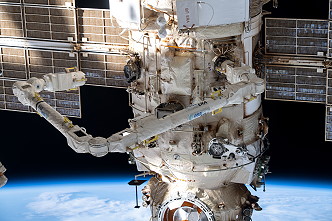 |
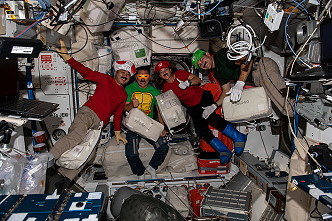 |
 |
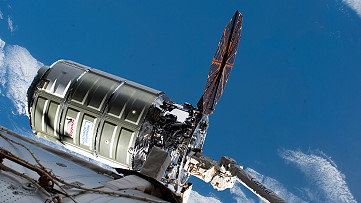 |
 |
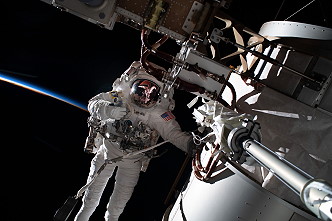 |
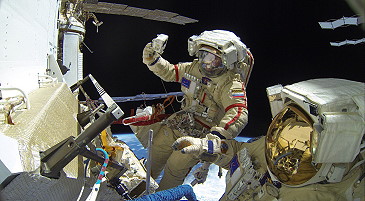 |
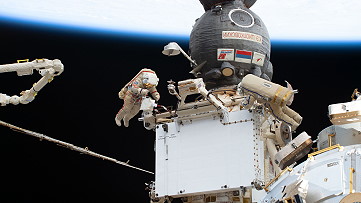 |
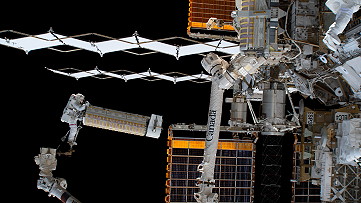 |
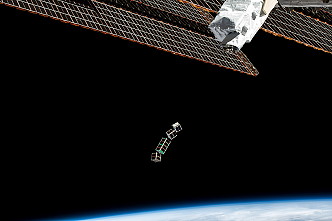 |
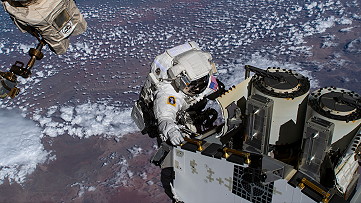 |
 |
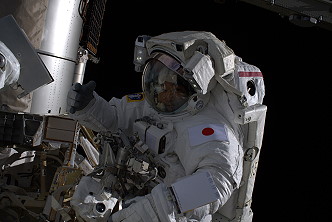 |
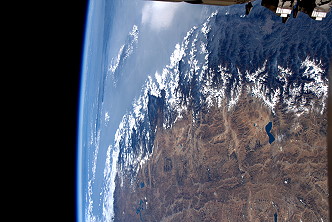 |
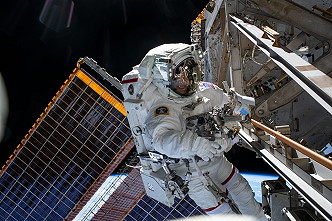 |
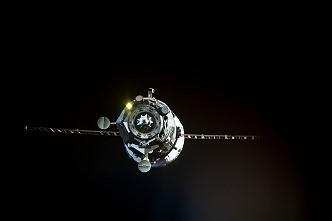 |
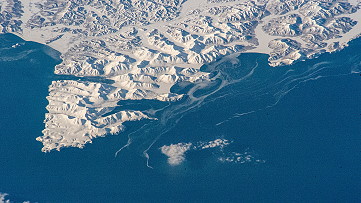 |
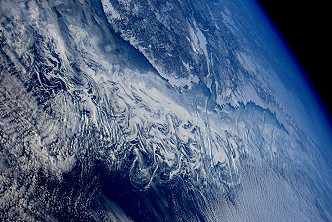 |
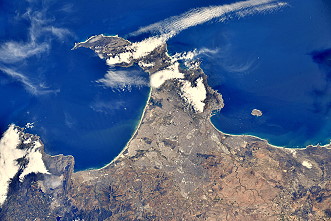 |
more onboard photos |
|
more EVA photos |
|
| © |  |
Last update on September 14, 2024.  |
 |